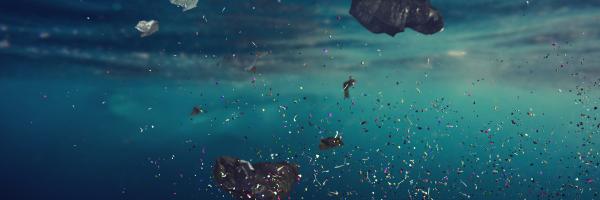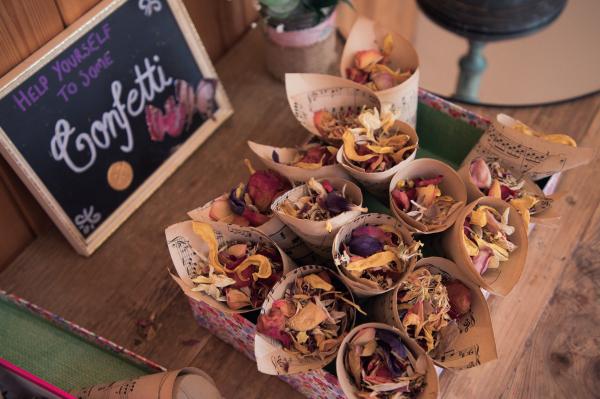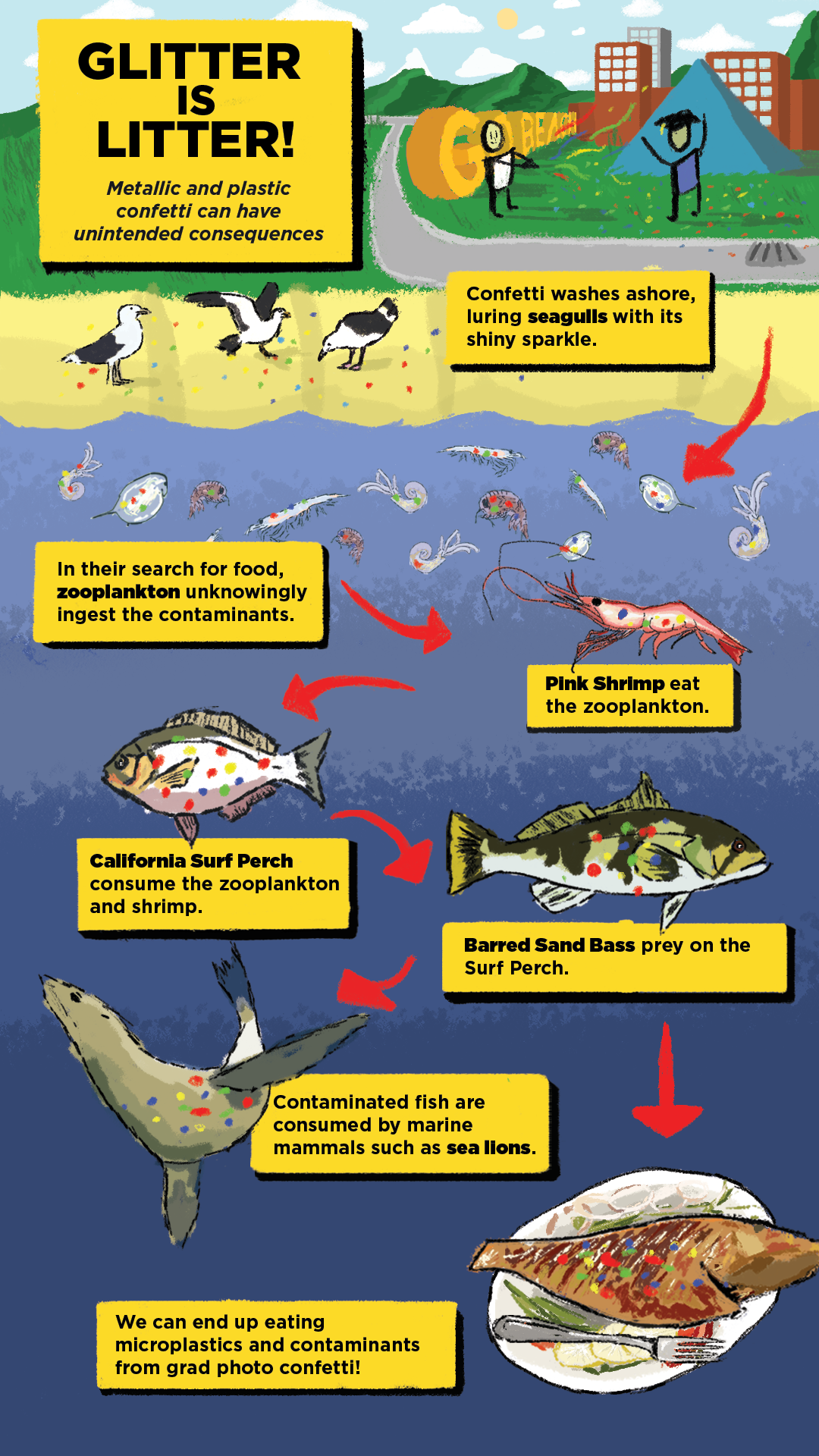Glitter is Litter!
Graduation is a milestone that should be celebrated. Confetti and glitter are often used to celebrate this joyous occasion and add sparkle to graduation photos, however, due to their material composition and size, they also contribute to microplastic pollution and litter.
It is crucial to consider the environment wherever you go, including here at CSULB. The campus is not only home to an urban forest made up of almost 7000 trees and a variety of wildlife, but it is also the origin point for stormwater that flows into the Los Cerritos Channel, ultimately ending up in the Pacific Ocean. These areas provide habitat for a variety of marine species which the confetti and glitter can negatively impact.
As we approach the occasion, let's take steps to be more environmentally conscious! Remember, confetti is pollution and glitter is litter!
Learn more about the issue and sustainable alternatives below:

Microplastics are small pieces of plastic that are less than 5 millimeters long. These are generated from larger pieces of plastic that over time break down. Microplastics are harmful to the environment in a variety of ways.
Confetti is often made of PVC (polyvinyl chloride) a synthetic plastic that is one of the most toxic plastics due to the amount of chlorine and dioxin chemicals within the plastic. These materials can take up to 1,000 years to break down and are toxic to the environment!
Tiny fragments end up in rivers and oceans and are consumed by marine life and birds, bioaccumulating as they move up the food chain.
Once microplastics are in the environment, it is extremely difficult, if not impossible, to clean them up and restore ecosystems to their original state!
CSULB is a thriving ecosystem that is home to a variety of animal species. These animals can mistake microplastics for food. The presence of microplastics presents a dual threat – not only do these particles jeopardize the health of species within our campus environment, but they also pose significant risks to creatures in the nearby ocean and marine ecosystems. Corals, sea turtles, wild trout, and bass suffer and often die from ingesting these products. Birds that eat these fish will also be impacted by these microplastics.
Caring for ecosystems and the creatures within them means doing what we can to avoid littering the environment with non-biodegradable microplastics such as confetti and glitter.

Good news! You can continue to celebrate by using eco-friendly alternatives to confetti that are not harmful to our environment!
Here is a list of a few alternatives that you can try out:
- Fresh or dried flower petals can add a color pop to your photos
- Bubbles
- Filters
- Natural confetti made from hole-punched leaves
- Letter board, chalkboard, or picture frames
- Biodegradable confetti (such as tissue paper or seed paper)
Our collective actions, no matter how small, can make a big difference. Let's celebrate responsibly, leaving a legacy that reflects our commitment to the well-being of our planet.

- Microplastics in the Ocean – Separating Fact from Fiction – Woods Hole Oceanographic Institution (whoi.edu)
- Eco glitter causes the same damage to rivers as an ordinary product – study | Consumer affairs | The Guardian
- Graduate Without the Glitter | UC Davis
- Biodegradable Confetti - The Confetti Bar
- Flowerfetti: Confetti Made of Flowers | Bouqs Blog
- Ecofetti.com
- The Environmental Impact of Confetti—Plus Sustainable Alternatives to Try - Brightly





